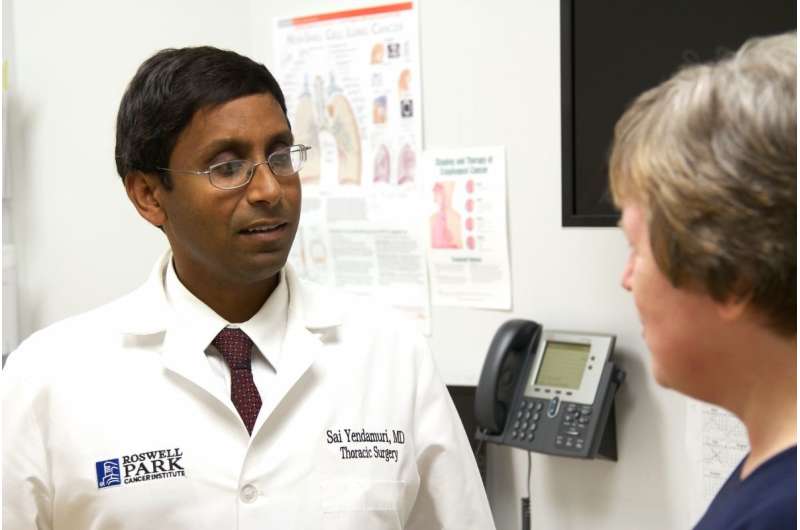What to expect from lung cancer surgery

Surgery remains the primary treatment for early-stage lung cancer, and most commonly that means a procedure called lobectomy, which removes about one-third to one-half of the lung with the tumor.
Even in 2017, it's the one treatment that offers patients with lung cancer their best option for prolonged survival. But, of every 100 patients, only 20 to 25 can actually have lung surgery because their disease was diagnosed at an early stage. Patients with later-stage cancers are not candidates for surgery because not all of the disease can be removed and the likelihood of recurrence is too great. That's not a very high number of patients, and that's the unfortunate part. We would like to see more lung patients able to undergo surgery to have a better chance for better outcomes.
Thanks to our lung cancer screening program, we are starting to diagnose more cancers at an earlier stage, but screening with low-dose chest CT imaging is not used as widely as it should be. More people—especially current and former smokers—should learn whether lung cancer screening is indicated for them.
Minimally invasive procedures are game-changers
Traditional, open methods of lung surgery with large incisions (thoracotomy) are very difficult on the patient, especially frail or older patients, and cause significant trauma to the chest wall, requiring a prolonged period of recovery. At Roswell Park, all our thoracic surgeons use minimally invasive surgical techniques, in which we operate through two to four small incisions called ports, with 3-dimensional video guidance. These procedures include video-assisted thoracoscopic surgery (VATS) or robot-assisted thoracic surgery (RATS). With VATS, the surgeon holds the surgical tools and with RATS, the surgeon uses a robot to manipulate the tools. Both procedures are a safer surgical option than thoracotomy and are associated with a shorter inpatient stay, faster return to normal activities and significantly less pain.
Nationally, only about 40 percent of lobectomy procedures are done using the minimally invasive (VATS and RATS) approaches. At Roswell Park, our surgeons perform about 90 percent of lobectomies minimally invasively. Of the approximately 250 lobectomies we perform each year, about 70 percent use VATS, 20 percent use robotics, and 10 percent are done with open surgery, usually due to tumor location or extent of disease.
Better ability to tolerate further treatment
These minimally invasive techniques offer important benefits to our patients. The surgery generally takes just two to four hours, and the patient's hospital stay is typically only three to four days. Most patients can resume their normal activities within a month, without the need for long-term portable oxygen.
In addition, the less-traumatic surgery means most patients are able to continue with further cancer treatment such as chemotherapy and radiation therapy. About two-thirds of our patients will have chemotherapy as part of their treatment plan. A small percentage of them have chemotherapy before their surgery, and a good number of them have it after surgery. Chemotherapy treatments can usually begin soon after the surgery, within three to four weeks. A lower proportion of patients who undergo open surgery can tolerate chemotherapy afterwards.
Roswell Park strives to help more patients become candidates for surgical treatment. For example, patients with marginal lung function, which would normally preclude surgery, may participate in a lung-training program. It's like weight training for your lungs and involves breathing and other exercises aimed at strengthening the muscles involved in the lungs and improving lung function enough to undergo surgery.















